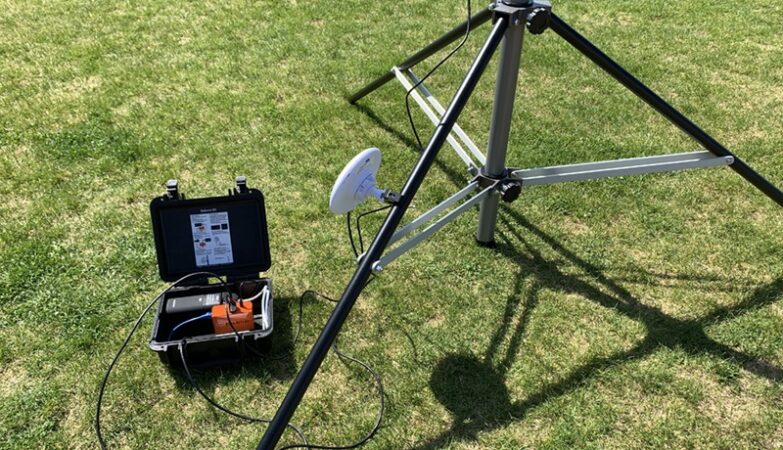We live in an age engulfed by a sea of data, where navigating decisions based on intuition alone has become exceptionally tricky. Predictive analytics is our glowing beacon, leveraging data-science algorithms to uncover hidden insights and illuminate better pathways forward. As predictive technology grows more sophisticated entering 2024, it promises sharper foresight and an elevated capacity for revealing encoded secrets that can profoundly impact humanity’s trajectory.
What are the Core Concepts?
Fundamentally, predictive analytics employs historical datasets and cutting-edge algorithms to identify obscure patterns systematically. This knowledge enables probabilistic modeling to forecast events from viral pandemics to individual customer behaviors. It moves beyond conjecture to scientifically decode correlations and causal mechanisms influencing outcomes.
Advanced algorithms, including artificial neural networks, are specialized to ingest diverse datasets, detect intervariable connections, and construct predictive mathematical models. By applying these models to current data, they can precisely anticipate future occurrences.
Key Driving Forces
Powerful tailwinds of technological progress and an insatiable demand for data-driven decision-making propel predictive analytics into an elevated phase. Several breakthrough forces shape its metamorphosis.
Democratization Empowering Business Teams
Sophisticated predictive capabilities are no longer siloed within specialized IT teams. User-friendly data science course in Pune enable intuitive data analysis course in Pune by non-technical domain experts across departments.
For example, marketing analysts lacking specialized skills can utilize customer datasets to build churn predictive models that create highly targeted retention campaigns. Frontline sales representatives also gain data-driven perspectives into prospect behavior patterns to dynamically adapt engagement strategies via user-friendly analytics dashboards.
The Ideal Blend: Humans and AI
Cutting-edge AI algorithms, especially deep learning neural networks, extract subtle insights even from highly complex datasets with unparalleled precision. They expand predictive analytics’ scope, accuracy, and context.
However, human oversight remains critical to nurturing the optimal functioning of AI systems aligned with business goals. “The sweet spot is combining AI throughput with human creativity and oversight,” explains Adele Mathews, Principal Data Scientist at Google Cloud.
Indeed, this ideal synthesis of human ingenuity and machine intelligence promises to dominate the future landscape. Businesses investing in this harmonious collaboration gain a sustained competitive edge.
Transitioning to Real-Time Activation
In addition to post-hoc analysis of historical data, predictive engines now increasingly integrate real-time data streams. This empowers instant, adaptive decision-making based on ever-updating predictions.
For example, e-commerce platforms can anticipate sudden surges in website traffic and instantly deploy additional cloud resources to prevent crashes. Supply chain optimization systems can also continuously adjust manufacturing unit workflows based on real-time demand forecast updates.
Establishing Trust via Explainability
The opacity of many AI predictive systems impedes enterprise adoption in critical processes. Explainable AI techniques establish trust and confidence by elucidating the logical connections and historical data correlations behind automated forecasts. This facilitates thoughtful human oversight to nurture responsible AI decision-making aligned with ethics and values.
The Multidimensional Impact
Futuristic advancements in predictive analytics promise cross-industry disruption:
Revolutionizing Healthcare
Predictive analytics unlocks a multitude of healthcare advances:
- Predict viral outbreaks by early infection cluster identification
- Enable personalized medicine tailored to patients’ unique DNA
- Optimize hospital resource planning via predictive patient flow models
- Early intervention for at-risk patients identified using predictive healthcare engines
“Predictive analytics even shows promise to uncover advanced signals heralding the onset of dementia before symptomatic stages,” explains Dr. Lakshmi Rajan, Neurology Professor at Johns Hopkins University. This opens a window for preemptive therapeutics capable of dramatically slowing cognitive decline.
Elevating Ecommerce Experiences
Intelligent commerce leverages predictive analytics to enhance consumer experiences:
- Reduce customer churn through predictive user engagement optimization
- Craft highly personalized recommendations to boost satisfaction
- Forecast sales trajectories to dynamically optimize supply chains
- Adjust pricing aligned to demand fluctuation predictions
“Harnessing the power of data, predictive analytics paints a 360-degree view of each shopper, enabling retailers to delight them preemptively,” notes Sheila Warren, Chief Technology Officer at the World Economic Forum. “This deepens loyalty and saturation unlike anything previously possible.”
Securing Finance
The financial domain embraces predictive engines to add efficiency, security, and personalization:
- Detect fraud in real time by profiling transaction data
- Automate credit decisions grounded in risk prediction matrices
- Anticipate macroeconomic shifts to devise investment strategies
- Send personalized investment ideas tailored to age and risk levels
“It feels like science fiction, but trading firms today have AI hedge fund managers predicting micro stock movements and automatically executing profitable trades ahead of markets,” explains InvestTech Analyst Roger Girard. This generates massive value.
Boosting Manufacturing Output
Smart manufacturing leverages predictive analytics for immense optimization:
- Automate predictive maintenance to minimize downtime
- Continually adjust fabrication based on demand forecasting
- Trigger automated inventory replenishment via supply chain analytics
- Refine product designs through predictive prototype performance assessments
“By combining advances in sensor technology streaming real-time equipment data with AI predictive models, modern factories modulate production with pinpoint precision to market needs,” explains Ola Electric’s Head of Analytics Julia Kowalski. This boosts output while reducing overheads.
Challenges and Considerations
However, achieving predictive analytics’ full potential necessitates overcoming key challenges:
Data Security and Privacy
Centralizing vast data volumes heightens privacy concerns. Robust cybersecurity protocols, access controls, data anonymization, and governance frameworks with internal audits safeguard information security without deteriorating analytical fidelity.
Mitigating Bias Risk
Since predictive algorithms learn biases latent in historical training data, this gets propagated into AI systems. However, employing thoughtful data sampling strategies, indicator selection, diverse model validation, and emphasizing inclusion within analytics teams helps mitigate this risk.
Managing Labor Market Impacts
Automating tasks using predictive analytics causes workforce disruptions as skill requirements shift. However, disruption opens doors, too. Policymakers can implement protective measures for vulnerable workers and skills retraining programs that empower workers to transition into newly created predictive analytics jobs.
Promoting Responsible AI Practices
With AI black boxes running mission-critical predictive processes come ethical dilemmas around accountability and transparency. However, concepts like explainable AI establish trust in these systems while promoting human oversight for responsible AI adoption. Governance frameworks addressing pressing issues like bias also foster ethical technology standards.
Making Analytics Education Accessible
As predictive analytics becomes ubiquitous, data literacy is crucial to democratize opportunities in this space. Governments and businesses must invest in analytics training programs and learning incentives at scale. Accessible data science course in Pune, where talent abounds, provide fertile ground for transformation. Targeted data analysis course in Pune certification drives that support women, rural communities, and lower-income groups are key to catalyzing an inclusive analytics economy.
Conclusion
Despite the challenges, predictive analytics unlocks immense latent potential ready for harnessing to uplift humanity. With a spirit of collaborative optimism, we can cultivate responsible frameworks guiding ethical application towards positive disruption. The outlook shines brightly to realize the full transcendent power of prediction intelligence!
ExcelR – Data Science, Data Analyst Course Training
Address: 1st Floor, East Court Phoenix Market City, F-02, Clover Park, Viman Nagar, Pune, Maharashtra 411014
Phone Number: 096997 53213
Email Id: enquiry@excelr.com








